The biggest Communist Party. Ninety-four years old PDA
The spread of communist ideas in China was a direct consequence of the gradual penetration in the European trends and the search for possible ways of modernization of Chinese society. The most progressive part of the Chinese intelligentsia was well aware of the impossibility of preserving the old feudal order that prevailed in the Qing Empire and impeded the development of China. Neighboring Japan, which was under the strong cultural influence of China, nevertheless succeeded at the end of the 19th century, as a result of rapid modernization, to become an economically and militarily developed power of regional importance, which gradually reached the world level. China was not lucky - in the first half of the twentieth century. he was an extremely politically unstable, fretted by internal contradictions and armed conflicts, an economically backward state. Japan considered the territory of China as its sphere of influence, hoping, sooner or later, to completely subjugate the country. On the other hand, China was “divided” by the major European powers and the USA. Russia also did not stand aside, having put control of vast areas of northeastern China. In the late XIX - early XX centuries. China began to emerge in small circles nationalist orientation, whose members were convinced of the need for fundamental political changes in the country. One of the first such organizations was the China Renaissance Society (Xingzhunhui), established in 1894 in Honolulu (the capital of the Hawaiian Islands) Sun Yat-sen (1866-1925). It was Sun Yat-sen was a key ideologist of the national liberation movement in China in the first quarter of the twentieth century in putting forward three key principles -. Nationalism, democracy and people's welfare. Subsequently, Sun Yatsen approvingly approached the October Revolution in Russia, the activities of the Bolshevik Party, but he did not take up Marxist positions. But his political program was supplemented with a clause on the need for cooperation with the Communists. Revolutionary nationalist Sun Yat-sen, however, was far from the Marxist-Leninist theory. He was more impressed by progressive nationalism, based on the desire to turn China into a strong national state.
The first Communists of the Middle Kingdom
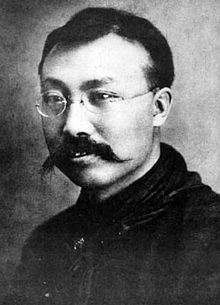 Radical leftist political groups began to appear in China during the Xinhai Revolution, which resulted in the Manchu Qing Dynasty was overthrown and proclaimed the Republic of China. At the origins of the spread of Marxist ideas in the Celestial Empire were representatives of the Peking intelligentsia. In fact, at the first stage of their development, Chinese Marxist circles were formed by university professors from among students who sympathize with the revolutionary ideas. One of the first popularizers of Marxism in China was Li Dazhao (1888-1927). A native of a peasant family living in the northeastern province of Hebei, Li Dazhao had a high ability since childhood and this enabled him to get an education in Japan. In 1913, he went to study political economics at Waseda University and returned home only in 1918. It was while studying in Japan that young Li Dazhao met with revolutionary socialist, including Marxist, ideas. After studying in Japan, Li Dazhao got a job as a library director and professor at Peking University. He openly supported the revolutionary changes in neighboring Russia and considered them an example for the possible development of Chinese society. It was Li Dazhao in 1920 that began the creation of the first Marxist circles in higher and secondary educational institutions in Beijing. A thirty-year-old professor at Peking University enjoyed a well-deserved prestige among the educated youth of the Chinese capital. Young people sympathizing with revolutionary ideas and admiring the experience of the October Revolution in neighboring Russia stretched towards him. Among the closest assistants of Li Dazhao in his professional activities was a young man named Mao Zedong. Junior Mao worked as an assistant at the Beijing University Library and Li Dazhao was his direct supervisor.
Radical leftist political groups began to appear in China during the Xinhai Revolution, which resulted in the Manchu Qing Dynasty was overthrown and proclaimed the Republic of China. At the origins of the spread of Marxist ideas in the Celestial Empire were representatives of the Peking intelligentsia. In fact, at the first stage of their development, Chinese Marxist circles were formed by university professors from among students who sympathize with the revolutionary ideas. One of the first popularizers of Marxism in China was Li Dazhao (1888-1927). A native of a peasant family living in the northeastern province of Hebei, Li Dazhao had a high ability since childhood and this enabled him to get an education in Japan. In 1913, he went to study political economics at Waseda University and returned home only in 1918. It was while studying in Japan that young Li Dazhao met with revolutionary socialist, including Marxist, ideas. After studying in Japan, Li Dazhao got a job as a library director and professor at Peking University. He openly supported the revolutionary changes in neighboring Russia and considered them an example for the possible development of Chinese society. It was Li Dazhao in 1920 that began the creation of the first Marxist circles in higher and secondary educational institutions in Beijing. A thirty-year-old professor at Peking University enjoyed a well-deserved prestige among the educated youth of the Chinese capital. Young people sympathizing with revolutionary ideas and admiring the experience of the October Revolution in neighboring Russia stretched towards him. Among the closest assistants of Li Dazhao in his professional activities was a young man named Mao Zedong. Junior Mao worked as an assistant at the Beijing University Library and Li Dazhao was his direct supervisor. Colleague Li Dazhao, Professor Chen Duxiu (1879-1942) was nine years older and had a richer experience in politics. Coming from a rich bureaucratic family living in Anhui Province, Chen Duxiu received a good home education in the classical Confucian traditions, after which he passed the state exam and received a degree of sytsaya. In 1897, Mr. Chen Duxiu entered the Academy of Zushi, where he studied shipbuilding. Like Li Dazhao, he received further education in Japan, where he went to 1901 to improve his knowledge. In Japan, Chen became a follower of revolutionary ideas, although he did not belong to the national liberation movement under the leadership of Sun Yat-sen. In May, 1903 founded the Anhui Patriotic Union in his native province of Anhui, but was forced to move to Shanghai due to the persecution of the authorities. There he began to publish the National Daily newspaper, then returned to Anhui, where he published Anhui News.
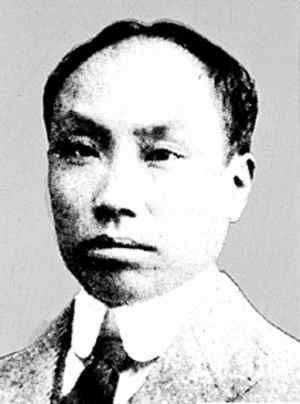 In 1905, as a teacher at the Wuhu City School, Chen created the Yuewanghoi National Liberation Society. Then there was again studying in Japan - at the Waseda University, teaching work at a military school in the Chinese city of Hangzhou. In 1911, after the Xinhai Revolution, Chen became secretary of the new revolutionary government in Anhui Province, but for opposition views was dismissed from this position and not even briefly arrested. In 1917, Mr. Chen Duxiu headed the philological faculty of Peking University. The dean of the faculty met with library manager Li Dazhao, who by this time had already led a small circle studying Marxism. For his revolutionary activities, Chen Duxiu was removed from his post as dean of the faculty and was even arrested on the 83 day, after which he left Beijing and moved to Shanghai. Here he founded the Marxist group.
In 1905, as a teacher at the Wuhu City School, Chen created the Yuewanghoi National Liberation Society. Then there was again studying in Japan - at the Waseda University, teaching work at a military school in the Chinese city of Hangzhou. In 1911, after the Xinhai Revolution, Chen became secretary of the new revolutionary government in Anhui Province, but for opposition views was dismissed from this position and not even briefly arrested. In 1917, Mr. Chen Duxiu headed the philological faculty of Peking University. The dean of the faculty met with library manager Li Dazhao, who by this time had already led a small circle studying Marxism. For his revolutionary activities, Chen Duxiu was removed from his post as dean of the faculty and was even arrested on the 83 day, after which he left Beijing and moved to Shanghai. Here he founded the Marxist group. Creation of the Chinese Communist Party
At the beginning of 1921, the Marxist groups, under the leadership of Li Dazhao and Chen Duxiu, decided to unite. The process of uniting groups into a single political organization itself took place under the supervision and with the direct participation of Grigory Voitinsky, head of the Far Eastern sector of the Eastern Division of the Executive Committee of the Communist International. At the end of June 1921 in Shanghai, a congress of Marxist groups was held, at which on July 1 1921 was officially proclaimed the creation of the Chinese Communist Party. The congress was attended by 53 people, including just 12 delegates representing disparate Marxist groups operating in various cities in China. In accordance with the decision of the congress, the goal of the party was to proclaim the establishment of the dictatorship of the proletariat in China and the subsequent construction of socialism. The Chinese Communist Party recognized the leading role of the Communist International as the leading structure of the world communist movement. The congress was attended by Li Dazhao, Chen Duxiu, Chen Gunba, Tan Pingshan, Zhang Goth Hae Mensyun Lowe Chzhanlun, Deng Jun, Mao Tse-tung, Tung Biu, Li Da, Li Hantszyuan Chen Tantsyu Liu Zhentszin, Zhou foba, Ho Shuhen, Dan Enmin. Chen Duxiu was elected Secretary of the Central Bureau of the Communist Party of China, Zhang Gotao and Li Da joined the bureau. At first, the size of the party was very small by the standards of China and it was difficult for 200 people to reach it. Mostly, these were teachers and students who were part of Marxist circles that operated in educational institutions of major Chinese cities. Naturally, at the beginning of its existence, such a small political organization could not have a real impact on the political life of China. Nevertheless, since Sun Yat-sen sympathized with the Bolsheviks and ordered the Chinese nationalists from the Kuomintang to cooperate with the Communists, the party had a chance to significantly consolidate its positions - first of all among the revolutionary youth, dissatisfied with the "militarists" policy. In 1924, the Central Committee of the Chinese Communist Party was formed, of which Chen Duxiu was also elected general secretary.
From the very beginning of its existence, the Chinese Communist Party has been actively involved in the political struggle in the country. In 1924, a national revolutionary front was created, the main participants of which were the Kuomintang Party and the Chinese Communist Party. With the direct assistance of the Soviet Union, the formation of the National Revolutionary Army began in Guangdong. Against this background, the Communists significantly strengthened their positions, since they were closely connected with the Soviet Union, and the Kuomintang party was counting on Soviet military and material and technical assistance. The Kuomintang and the Communists were temporary companions in the struggle against the militarist cliques, who controlled a large part of China’s territory and prevented the revival of a unified Chinese state with centralized control. 30 in May 1925 in Shanghai began mass protests against the pro-Japanese government of Zhang Zolin and the intervention of Western powers in the internal affairs of the Chinese state. The protesters began to besiege foreign concessions, after which, in addition to the Shanghai police, a contingent of Sikhs who had served to protect British objects in Shanghai joined the dispersal of the demonstrators. As a result of the dispersal of the demonstration, many people died, which further infuriated the Chinese not only in Shanghai, but also in other cities of the country.
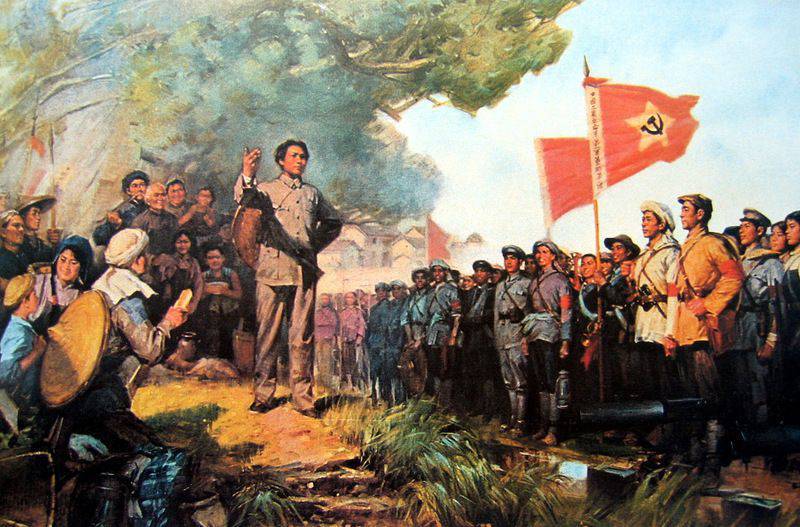
Coup Guomindang and the Communists
1 July 1925 in Guangzhou announced the formation of the National Government of the Republic of China. A year later, the main provinces of southern China — Guangdong, Guangxi, and Guizhou — were under the control of the Guangzhou government. 9 June 1926 began the famous Northern Expedition of the National Revolutionary Army, which resulted in the liberation of southern and central China from the power of the militarists. However, the first military successes of the National Revolutionary Army were followed by the inevitable differences in the camp of the Chinese national liberation movement - between supporters of the Kuomintang and the communists. The former were concerned about the growing influence of the Chinese Communist Party and were not going to share power with the communists, and even more so - to cede it to the communists. The latter were counting on a tactical alliance with the Kuomintang to put an end to militaristic cliques, and then to move to socialist transformations in the country. Naturally, the Kuomintang in “red” China had no place, and it was well understood by the Chinese generals, officials and entrepreneurs who were part of the leadership of the nationalist party.
When at the beginning of 1927, units of the National Revolutionary Army of China occupied Shanghai, the city began forming a coalition national revolutionary government consisting of representatives of the Kuomintang and the Chinese Communist Party. However, on April 12, 1927 was a group of representatives of the right wing of the Kuomintang under the leadership of Chiang Kai-shek made a military coup and outlawed the Chinese Communist Party. The Chinese Communists were forced to go underground, as the Kuomintang special services began to persecute and arrest the representatives of the communist movement. At the same time, the left wing of the Kuomintang did not support the policy of Chiang Kai-shek towards the Communists. Moreover, a significant part of the commanders and fighters of the National Revolutionary Army went over to the Communists, which pushed the latter to create the Chinese Red Army - their own armed forces, which were to fight both militarists and Chom Kai-shek Kuomintangs. 12 April 1927 was crossed the last line in the relations of the Kuomintang and the Chinese Communist Party. By order of Chiang Kai-shek, in Shanghai, captured by the forces under his control, a mass extermination of members of the Communist Party and sympathizers was organized, known as the "Shanghai Massacre." During the mass anticommunist action, the Kuomintang militants killed at least 4-5 thousands of people. The destruction of the communists was carried out by military units of the 26 Army of the Kuomintang with the assistance of local Shanghai organized criminal groups. The Shanghai gangsters were connected to Chiang Kai-shek to exterminate the Communists, because they were viewed as a force ally on the ground of anti-communism, which had great influence in Shanghai. The leaders of the Shanghai triads received large sums of money from Chiang Kai-shek and leaders of foreign concessions, after which they carried out the bloodiest work - thousands of unarmed communists who lived in the workers' districts of Shanghai were killed. Meanwhile, in Beijing, militarist Zhang Jolin ordered the arrest and destruction of Li Dazhao, one of the founders and leading activists of the Chinese Communist Party. In April, 1927 Mr. Li Dazhao was captured on the territory of the Soviet Embassy in Beijing and April 28 was hanged. So the actual founder of the Chinese communist movement ended his life. In the same year, 1927 was pushed aside from the leadership of the Chinese Communist Party and Chen Duxiu.
The repression against the Communists, launched by Chiang Kai-shek in 1927, led to the decision of the Comintern to reorganize the Central Committee of the Chinese Communist Party. The Central Committee included Zhang Gottao, Zhang Tilei, Li Weihan, Li Lisan, and Zhou Enlai. Chen Duxiu, General Secretary of the CPC Central Committee, was not included in the Central Committee; he was not invited to the Chinese Communist Party Conference in Hankou, which was held on 7 in August, 1921, Mr. Chen Duxiu, in response to such demonstrative disregard of his person, sent a letter to the conference participants asking resigned from the post of general secretary of the Communist Party. In response, Chen was accused of indecision, conniving of the policy of the Kuomintang and, according to the decision of the members of the Central Committee, dismissed from the post of general secretary of the party. After that, Chen Duxiu tried to create his own communist organization. However, at the end of 1929, he and his supporters were expelled from the Chinese Communist Party. In December, 1929, Mr. Chen Duxiu, published an open letter in which he emphasized serious mistakes in the policies of the Chinese Communist Party. In 1930, he organized a communist circle, which took up Trotskyist positions and supported Leon Trotsky in his opposition to Joseph Stalin and the Stalinist majority of the Comintern. In May, the 1931 of the Chinese Trotskyists attempted an organizational union led by Chen Duxu. A unification conference was held, at which Chen Duxiu was elected as the leader of the new Communist Party, consisting of 483 people. However, the history of the existence of this Trotskyist organization was short - soon the party fell apart, largely due to internal organizational and ideological contradictions. The Kuomintang people in 1932 were arrested and the head of the Trotskyist party Chen Duxiu was arrested, who went to prison for five years. After liberation, he was never able to regain his former political influence in the ranks of the Chinese communist movement, and subsequently completely withdrew from the Marxist-Leninist ideology, moving to the position of anti-authoritarian socialism and leaving the communist camp.
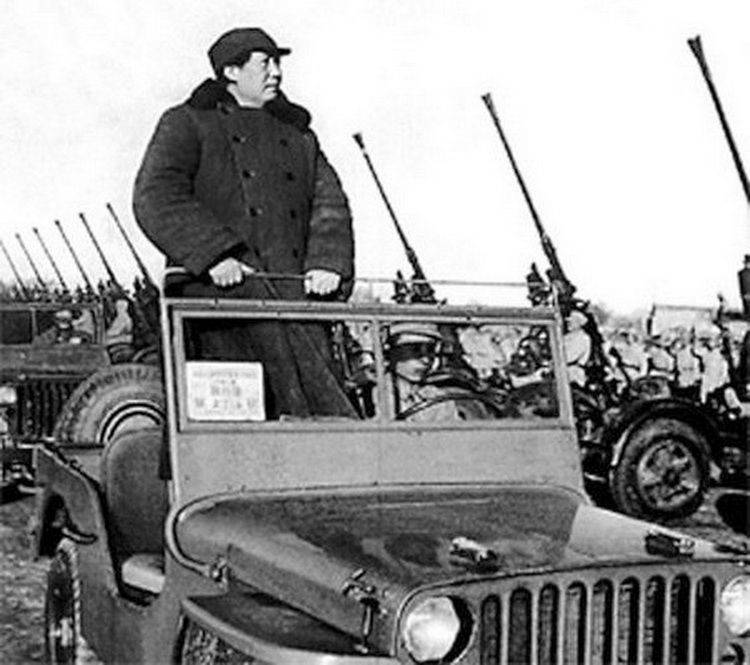
From liberated areas to liberated China
Despite the fact that by 1928, Mr. Chiang Kai-shek and the Guomindang party led by him took leading positions in the political life of China and placed most of the country's territory under control, the Chinese Communists also gained strength by turning to the tactics of creating “liberated areas”. In 1931, in the territory controlled by the Chinese Red Army, the Soviet Soviet Republic was established. 7 November 1931, in Ruijin, in Jiangxi Province, was held the 1 th All-China Congress of Soviets, which adopted the draft Constitution of the Chinese Soviet Republic and a whole range of regulatory acts. 38-year-old Communist Mao Zedong (1893-1976) was elected Chairman of the Provisional Central Soviet Government. Mao was in the ranks of the Communist Party of China almost from its inception, because, as noted above, he worked as an assistant to its founder, Li Dazhao. In the past, Mao was a student at a pedagogical school, but much more than studying in official educational institutions, he was given self-education. By the way, before the transition to the Communists, Mao sympathized with the anarchists, who also acted in the early twentieth century. in China. The Revolutionary Military Council of the Chinese Soviet Republic was headed by Zhu Jae (1886-1976) - a professional military officer by training, who graduated from the Yunnan Military School and served in officer positions in the training and combat units of the Chinese army for a long time. By the time he joined the Chinese Communist Party, Zhu De had experience in command of a battalion, regiment, brigade. He wore the rank of general, some time led the police department in Kunming. However, after joining the Communists, Zhu De went to Moscow in 1925, where he studied at the Communist University of Eastern Workers and in military courses. 28 August 1930 Mr. Zhu De was appointed Commander-in-Chief of the Chinese Red Army.
However, the Kuomintang troops, armed and supported by the Western powers, in the period 1931-1934. managed to recapture several areas formerly controlled by the Chinese Red Army. In October, the Communists left the Central Soviet District for 1934. By the fall of 1935, a smaller number of districts remained under the control of the communists. In the end, their number was reduced to one district on the border of the provinces of Gansu and Shaanxi. It is likely that the Kuomintang would sooner or later be able to inflict a crushing defeat on the Chinese Communists and destroy the communist resistance in the country if the military-political situation in the country had not changed radically. We are talking about the military aggression of Japan against China, undertaken in 1937, which led to the temporary unification of yesterday’s opponents - the Kuomintang armed forces and the Chinese Communist Party - in the struggle against the common enemy. China is the country that fought the longest in World War II. For China, the war with Japan began as early as 1937 and lasted 8 for years, until 1945, when imperial Japan officially capitulated, having suffered defeat from Soviet, Mongolian, Chinese troops and Anglo-American allies. In the anti-Japanese movement in China, the leading roles belonged to the Kuomintang and the Chinese Communist Party. At the same time, the authority of the Communist Party grew rapidly among the Chinese population, including among the peasants who made up the bulk of the recruited fighters of the Chinese Red Army. As a result of the combined efforts of the Kuomintang and the Communist Party of China, an agreement was reached between the parties on the formation of the 8 of the Chinese National Revolutionary Army on the basis of the Chinese Red Army. The commander of the army was appointed Zhu De, the deputy commander - Peng Dehuai, the chief of staff of the army - Ye Jianying, the chief of the army political administration - Ren Bishi. The 8 Army, under the command of Lin Biao, the 115 Division under the command of He Lung, and the 120 Division under the command of Liu Bocheng, became part of the 129 Army. The total strength of the army was determined in 45 by thousands of fighters and commanders. At the same time, 7 security regiments, which carried guard duty at the facilities, a military-political academy and a higher party school, were also stationed in the province of Shaanxi. In internal affairs, the army practically did not submit to the High Command of the Kuomintang and acted independently, proceeding from the orders of its commanders and directives received from the leadership of the Central Committee of the Chinese Communist Party.
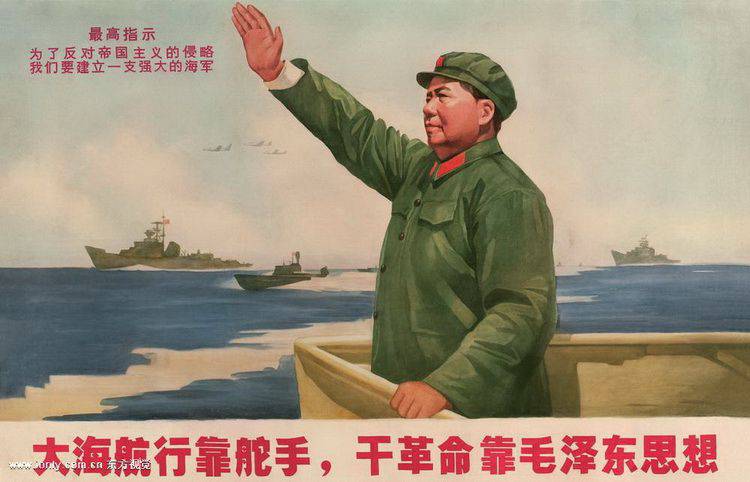
War with Japan escalated into civil
The eight-year anti-Japanese war has become a real “school of life” for the Chinese Communist Party. It was in the partisan battles of the Second World War that the Chinese Communist Party was formed and strengthened, becoming a numerous and active political force. Unlike the Kuomintang troops, who preferred to wage a positional war with the Japanese, restraining the offensive of the Japanese divisions, the partisans operating under the leadership of the Chinese Communist Party destroyed enemy communications and delivered lightning strikes on the Japanese troops. As a modern researcher A. Tarasov notes, “Mao relied on the understanding of the peasant nature of the revolution and the fact that the revolutionary struggle in China is a guerilla struggle. He was not the first to realize that the peasant war was a partisan war. For China, it was generally a characteristic tradition, because China can boast that it is a country in which the peasant war ended in victory, and the winners created a new dynasty ”(Tarasov A. Mao’s legacy for the 21st century radical. // http: // www .screen.ru / Tarasov). It is difficult to disagree with him, because it was the partisan peasant movement that contributed to the victory of the Chinese Communist Party in the internal political confrontation in the country. The peasantry of the poorest regions of China has become the most reliable support of the Chinese Communists in the struggle for power. The grassroots of the Communist Party and the People’s Liberation Army of China were also replenished from among the peasantry. The orientation towards the peasantry, which distinguishes the Maoist ideology, is in fact very successful in the “third world” countries, first of all, where the peasants constitute the majority of the economically active population. It was during the eight-year war that the size of the Chinese Communist Party grew from 40 thousands of members to 1 200 000 people. There was also a tremendous increase in the armed formations controlled by the communist party. They grew from 30 thousand people to 1 million people. Fighters and commanders of the CPC armed groups gained invaluable combat experience, and leaders and activists of party organizations and cells gained underground work experience. Chinese Communist Party in 1940 It was not the small organization of twenty years ago consisting of intellectuals and students and subjected to police repression. In 1940-s. The Chinese Communist Party turned into a real political machine, whose activities were subordinated to the main task - the liberation of all of China’s territory from the Japanese invaders and their satellites from the state of Manzhou-Guo, followed by the construction of a socialist state in China.
But the defeat of Japan in World War II did not bring a long-awaited peace to Chinese soil. As soon as the Japanese troops capitulated and were expelled from the territory of China, the struggle between the leading political forces of the country - the Kuomintang and the Communist Party intensified. In fact, the territory of China was again divided between two quasi-state formations - the Kuomintang and the communist China. The bloody civil war began. Initially, the Kuomintang troops even managed to take a number of important areas and points that were previously controlled by the communists. In particular, in March 1947, the city of Yenan fell, which previously housed the Central Committee of the Chinese Communist Party and the main headquarters of the People’s Liberation Army of China. But soon the Chinese Communists managed to take revenge and go on the offensive at the Kuomintang position. The war dragged on for another year, until, on January 31 of 1949, finally suppressing the resistance of the Kuomintang people, the People’s Liberation Army of China did not enter Beijing. The Chinese capital surrendered without a fight. 23-24 April, the Chinese Communists liberated the city of Nanjing from the Kuomintang people, in May 27 - Shanghai. Meanwhile, while the units of the People’s Liberation Army of China fought on the coast against the Kuomintang, the People's Republic of China was officially proclaimed in Beijing on October 1 on October 1949. When Chinese paratroopers landed on Hainan Island, seizing its territory and forcing the small Kuomintang garrison to flee, the Kuomintang troops were practically expelled from Chinese territory. Under the rule of Chiang Kai-shek only the island of Taiwan remained and several more islands in the Taiwan Strait. For decades, the Kuomintang turned into the ruling party of Taiwan, and under the leadership of the nationalists, the island, once a deep periphery inhabited by local peoples, related to Indonesians, and Chinese colonists - peasants, has become a developed industrial and scientific-technological country, which today is on the list .n. "Asian tigers".
Communists built modern China
As for the Chinese Communist Party, having come to power in 1949 as a result of the Civil War, it remains the ruling party of the country up to the present. For more than half a century of being in power in the country, the Chinese Communist Party has undergone the most serious changes in its domestic and foreign policy, in particular, it has ceased to focus on left-wing, radical and extremist views and has moved to a more pragmatic economic policy. However, before the “reformist” turn of the leadership of the Chinese Communist Party, China played a key role in the world revolutionary movement, sometimes assisting the same countries sponsored by the Soviet Union, and sometimes choosing independent objects for material and financial support (first of all, it refers to armed detachments, guerrilla groups, political organizations that pledge to support the proposals of the Chinese leadership and its position on the most important foreign field in exchange for comprehensive assistance cal issues).
One of the most prominent episodes in the history of the existence of the Chinese Communist Party was the "Great Cultural Revolution", which was carried out with the aim of finally breaking with the past, its culture and traditions. The cultural revolution that took place in 1966-1976 was carried out under the leadership of Mao Zedong and his associates of the youth formation - the "Red Guards" recruited from the representatives of young students - schoolchildren and students, and the "zaofani", recruited from young industrial workers. It was the detachments of the Red Guards and the Zuofans who carried out reprisals against representatives of the “old” and “bourgeois” intelligentsia, who came from “exploitative” circles, and at the same time also against party activists who did not support the ideas of Mao Zedong. Some researchers estimate the number of victims of the Cultural Revolution in China to no less than a million people. Subsequently, after the death of Mao Zedong and the departure from power of his main associates, the Cultural Revolution was condemned by the leadership of the Chinese Communist Party. Nevertheless, for ideological Maoists all over the world, it remains an example of the cleansing of society from the remnants of capitalist culture, value-ideological attitudes, and ideological stereotypes of the “exploitative society”.
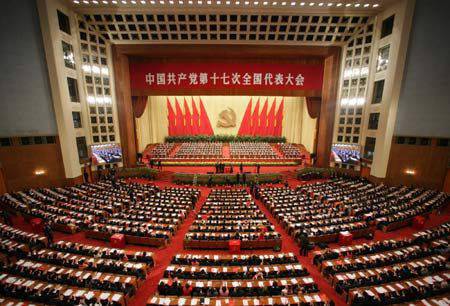
Over the 94 of its existence, the Chinese Communist Party has increased its number millions of times. Indeed, only 12 delegates took part in the constituent congress of the party, and by the time of the second congress the party was able to grow to 192 people. After the victory in the Civil War, the number of the Chinese Communist Party increased many times over and by 1958 it was 10 million members. Currently, the Communist Party of China consists of at least 86 million. In 2002, entrepreneurs were admitted to the party, after which many prominent Chinese businessmen were quick to acquire party cards. Once one of the most radical communist parties in the world that conducted the Cultural Revolution and supported the Maoist underground in all parts of the world, the Chinese Communist Party has now become a very respectable and very moderate politically political organization. But it now causes discontent with yesterday's "vassals" - the Maoists of South and Southeast Asia, Turkey and the countries of Western Europe, Latin America and the USA, who curse the Chinese Communist Party in "betraying the interests of the working people." But, be that as it may, the Chinese Communist Party succeeded in what the Soviet communists did not succeed in smoothly modernizing the economy, using both the advantages of the market and the effectiveness of state planning. At present, China is an economically prosperous country that forces the country to reckon with itself politically and politically. And a great merit in this is precisely the Chinese Communists.
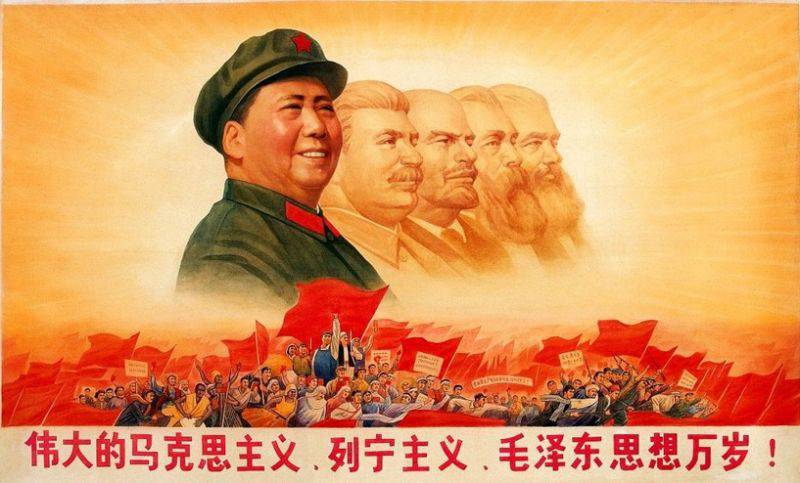
Information